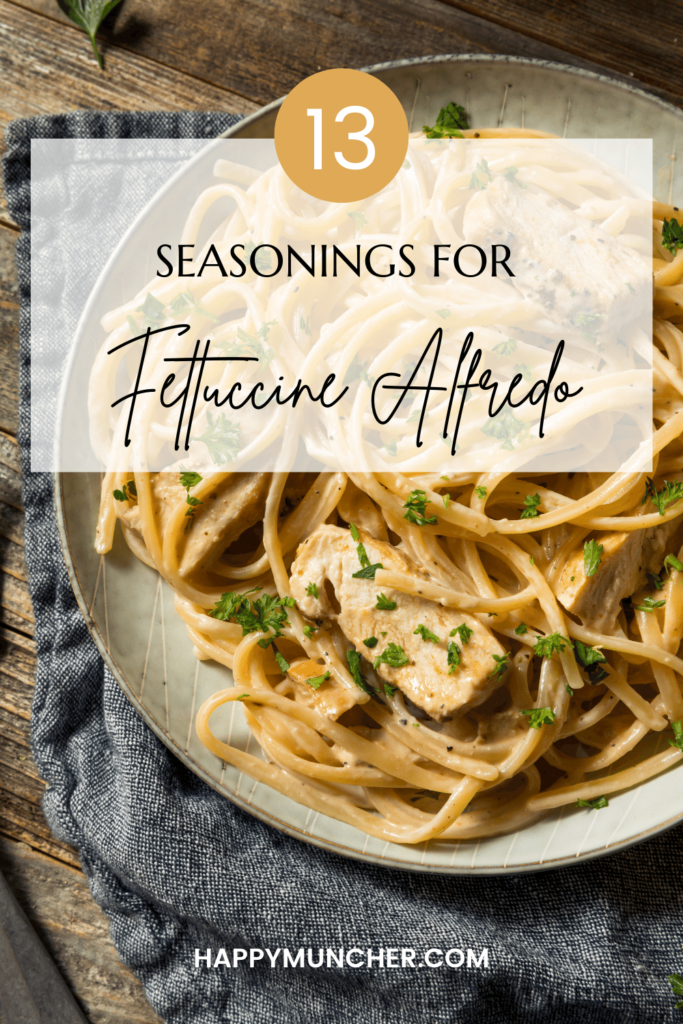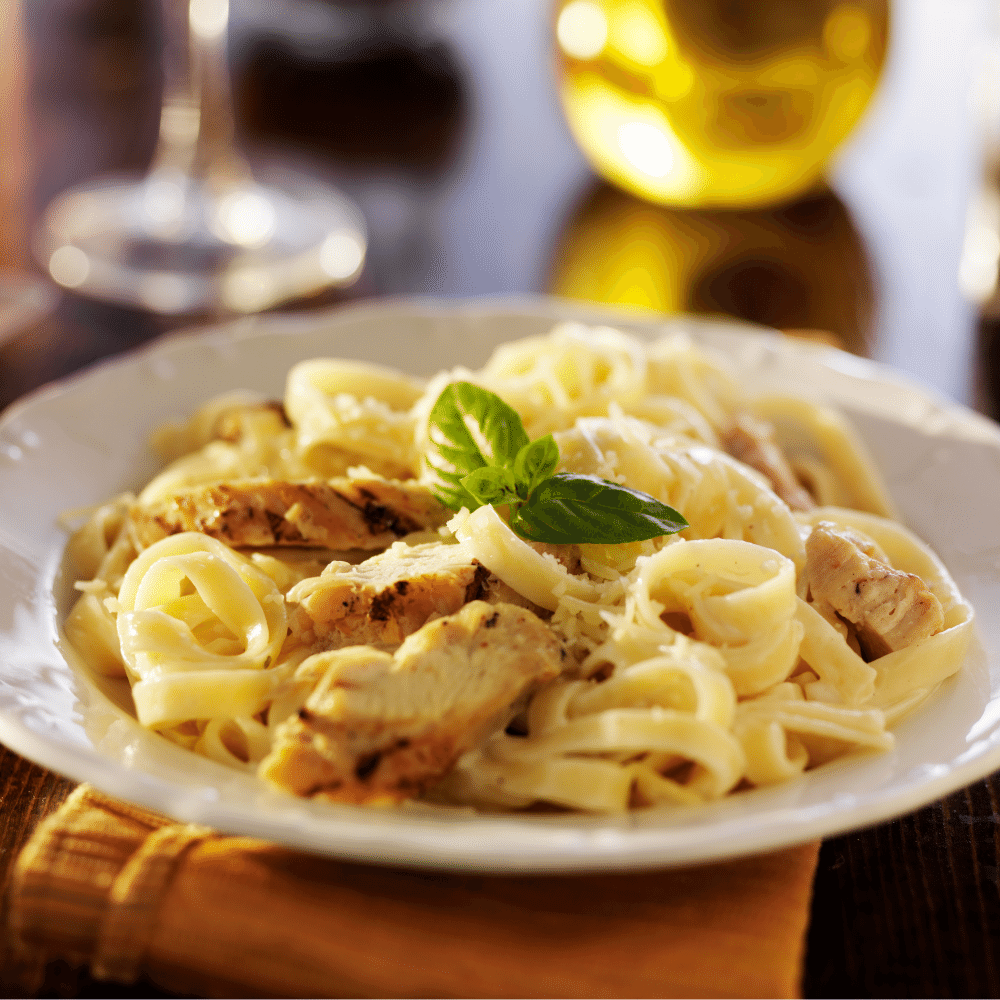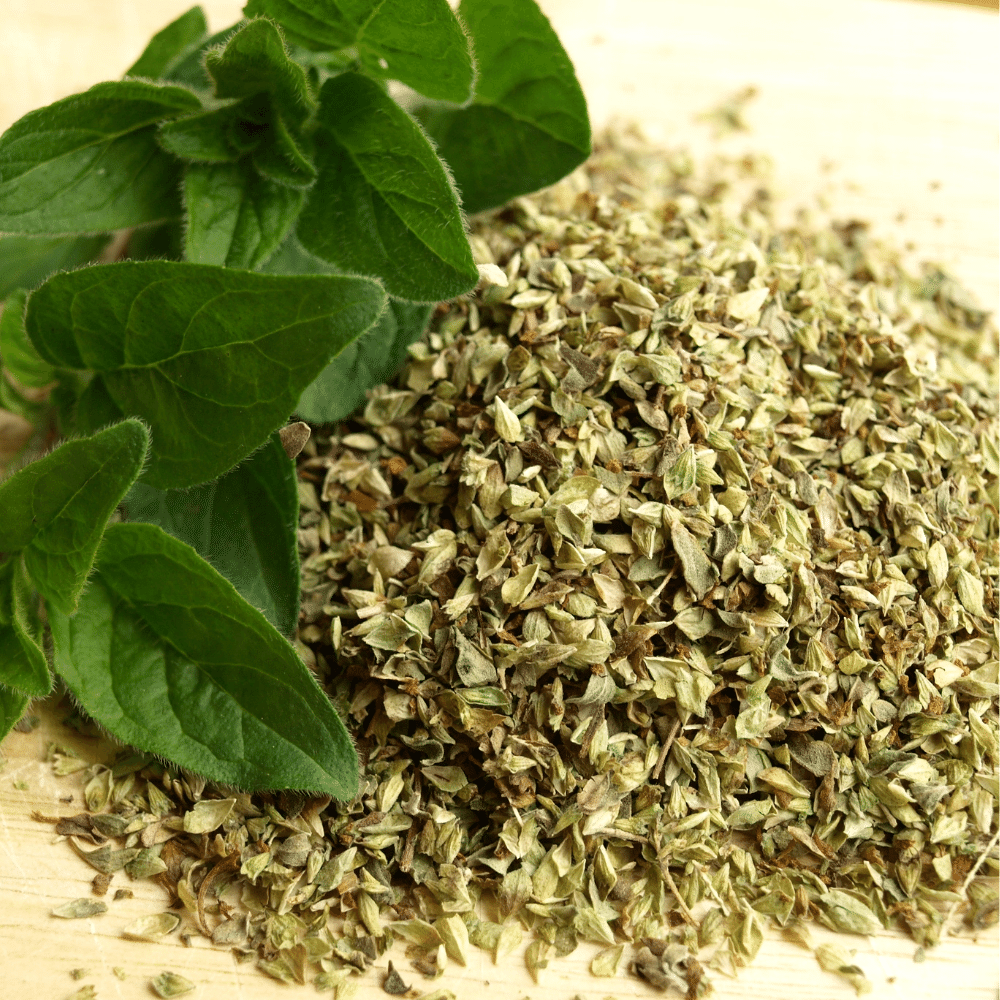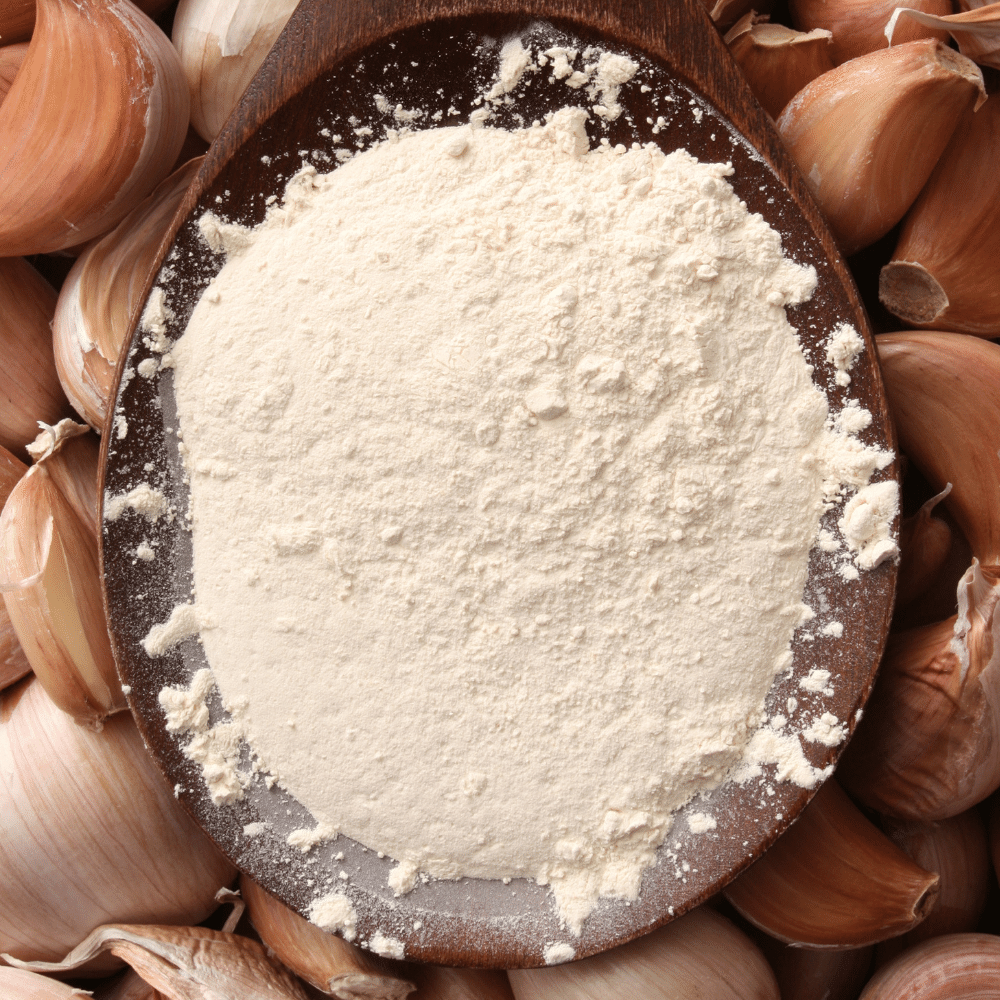If you’re a pasta lover, you’ve probably tried Fettuccine Alfredo.
And if you’ve tried it, we bet you’ve wondered what seasonings and spices are best for this creamy delight.
The good news is that there are plenty of options out there!

There are many spices and seasonings that go well in fettuccine Alfredo. You can try oregano, basil, thyme, garlic powder, onion powder, black pepper, white pepper, cayenne pepper, or red pepper flakes. You can also add Parmesan cheese, parsley, or green onions for extra flavor.
In this article, we’ve got 13 suggestions for seasonings and spices that go well with Fettuccine Alfredo, so you can create your own unique flavor experience.
13 Seasonings & Spices that Go Well in Fettuccine Alfredo

1. Black Pepper

Black pepper is the perfect seasoning for fettuccine alfredo.
The pepper has a sharp, pungent taste that really brings out the creaminess of the sauce, while also adding a hint of sweetness and smokiness that is absolutely divine.
You can either add ground pepper to your sauce or use whole peppercorns to add some texture and flavor.
2. Bay Leaf

Bay leaves are part of the laurel family and come from an evergreen tree called Laurus nobilis.
They’re used as a seasoning for soups and stews, as well as some sauces like béchamel sauce or alfredo sauce!
They make these dishes stand out because they give a nice earthy flavor that pairs well with meat dishes like steak or chicken fettuccine alfredo.
Bay leaves should be removed before serving because they can be tough to chew through!
3. Thyme

Thyme is a fragrant herb that adds a hint of citrus to any dish it’s used in (you can find fresh thyme at your local grocery store).
It pairs particularly well with this dish because it’s mild enough to not overpower the other flavors, yet still gives each bite a slight kick
4. Oregano

Oregano is a great way to add a little pizzazz to your dishes.
It’s a warm, earthy spice that pairs well with many different types of meat and vegetables.
We love it because it has an almost minty flavor, giving our food a zing without being overpowering.
We also love using oregano when we’re feeling like something festive—it can really make any dish feel like a celebration!
5. Rosemary

Rosemary is a wonderful herb that can be used in a variety of dishes.
It’s best used when it’s fresh, but it’s not hard to find dried rosemary as well.
If you’re using fresh rosemary, we recommend chopping it up into small pieces and adding it to your dish at the beginning of cooking.
This will help you get the most out of the flavor and aroma of this herb.
If you’re using dried rosemary, we recommend adding it near the end of cooking since it tends to lose its flavor quickly when exposed to heat for too long.
6. Basil

Basil is a great herb to use in savory dishes, and it’s also wonderful in desserts.
It has an almost minty flavor and a light, refreshing taste that brings out the best in whatever dish you’re making.
We like basil because it’s versatile.
You can chop it up or blend it into sauces for meat or fish, add some fresh leaves to salads or side dishes like potatoes, or even toss some into your smoothie after a workout for an extra boost of flavor and nutrients!
7. Garlic

Garlic is a great addition to pasta dishes because it adds an extra layer of flavor and complexity.
We like to use garlic in our pasta dishes because it gives the dish a little bit of bite, and we think that’s important for a well-balanced dish.
In our pasta dishes, we usually use about three cloves of garlic per person.
You can use more or less depending on how much you like garlic!
8. Nutmeg

Nutmeg is a spice made from the ground seeds of the nutmeg tree.
It’s one of our favorite spices, especially in pasta dishes.
Nutmeg has a sweet, warm flavor that can be used to add depth and complexity to a dish without overpowering it.
It pairs well with other warm spices like cinnamon and ginger, as well as citrus flavors like lemon or orange zest.
Nutmeg is also delicious when combined with meaty, hearty vegetables like mushrooms or spinach.
If you’re making a pasta dish that calls for nutmeg, we recommend starting with 1/2 teaspoon and then adjusting the amount based on your preferences after tasting it after cooking (one teaspoon is usually enough).
To get the best flavor out of this spice, make sure it’s fresh by buying whole nutmegs and grating them yourself just before using them in your recipe—you’ll get a fresher aroma that way!
9. Parsley Flakes

If you’re looking for a way to make your Fettuccine Alfredo stand out from the rest, then parsley flakes is the way to do it.
Parsley flakes are a simple and flavorful addition to fettuccine alfredo that will give your dish a bright, fresh taste.
They’re also easy to use—just sprinkle them over your noodles after they’re cooked and mixed with sauce.
The parsley flakes can be found in most grocery stores, but if you can’t find them at yours, try looking online.
10. Chili Powder

Chili powder is a versatile spice that can be used to give a dish a little kick, or as an all-purpose seasoning.
It’s also sometimes called “chili powder,” which is a bit confusing.
Chili powder is made from ground chili peppers, and it’s very hot—it’s not for the faint of heart!
When using chili powder in your cooking, it’s important to remember that too much of it can overpower your dish and make it taste like you’re eating pure heat.
But if you’re careful and use just enough, you’ll be rewarded with some serious flavor.
We love chili powder because it adds an extra dimension of flavor to our favorite dishes.
You can sprinkle some on top of baked potatoes or add a pinch to scrambled eggs for an extra kick.
11. Garlic Powder

Garlic powder is a great tool for adding a little bit of garlic flavor to your pasta, without having to chop up and chop fresh garlic every time you cook.
We use it in our cooking all the time, because we love the flavor, but also because it’s easy and convenient.
We recommend using about 1 teaspoon of garlic powder for every 2 cups of pasta that you cook.
You can add more or less to taste, or if you want to be more precise about how much garlic flavor you want in your dish, just adjust the amount according to what quantity of pasta you’re cooking.
There are so many reasons why we love garlic powder—it’s easy, it adds great flavor without overpowering anything else in your meal, and most importantly: it keeps us from having to chop up fresh garlic every time we cook!
12. Onion Powder

Onions are a staple in most kitchens, but they can be a little overpowering when you’re cooking something delicate.
That’s where onion powder comes in!
Onion powder is a great way to add some onion flavor without adding any moisture to your dish.
It’s also more versatile than fresh onions, so you can use it in things like stir-fry or pasta sauce.
Just add it in at the end of your cooking process and let it simmer for about five minutes before serving!
You’ll want to start with a small amount of onion powder at first—about 1/2 teaspoon per serving—and increase from there if you need more onion flavor.
You’ll also want to keep in mind that the amount of time your food cooks will affect how much onion flavor comes through; if you’re using a slow cooker, it’ll take longer for the flavors to develop than if you were using a pressure cooker or oven.
13. Dill

Dill is one of our favorite herbs to use with pasta dishes, and we like it for a few reasons.
It’s got an earthy flavor that’s perfect for pairing with rich sauces, like Alfredo or tomato sauce.
Plus, its bright green color is beautiful on the plate—you can use it as a garnish or even add some fresh dill to your pasta dish itself.
We use about 2 tablespoons of fresh dill per pound of pasta when making a sauce—just enough to add flavor without taking over the dish!

13 Seasonings & Spices that Go in Fettuccine Alfredo
Ingredients
- Black Pepper
- Bay Leaf
- Thyme
- Oregano
- Rosemary
- Basil
- Garlic
- Nutmeg
- Parsley Flakes
- Chili Powder
- Garlic Powder
- Onion Powder
- Dill
Instructions
- Pick your favorite seasoning, spice or herb from this list to use in your pasta dish.
- Prepare the rest of your ingredients.
- Enjoy in no time!
Hi, I'm Benjamin. I love cooking, long walks, and my girlfriend! Here you’ll find simple and delicious recipes that you can make in 30 minutes or less.

